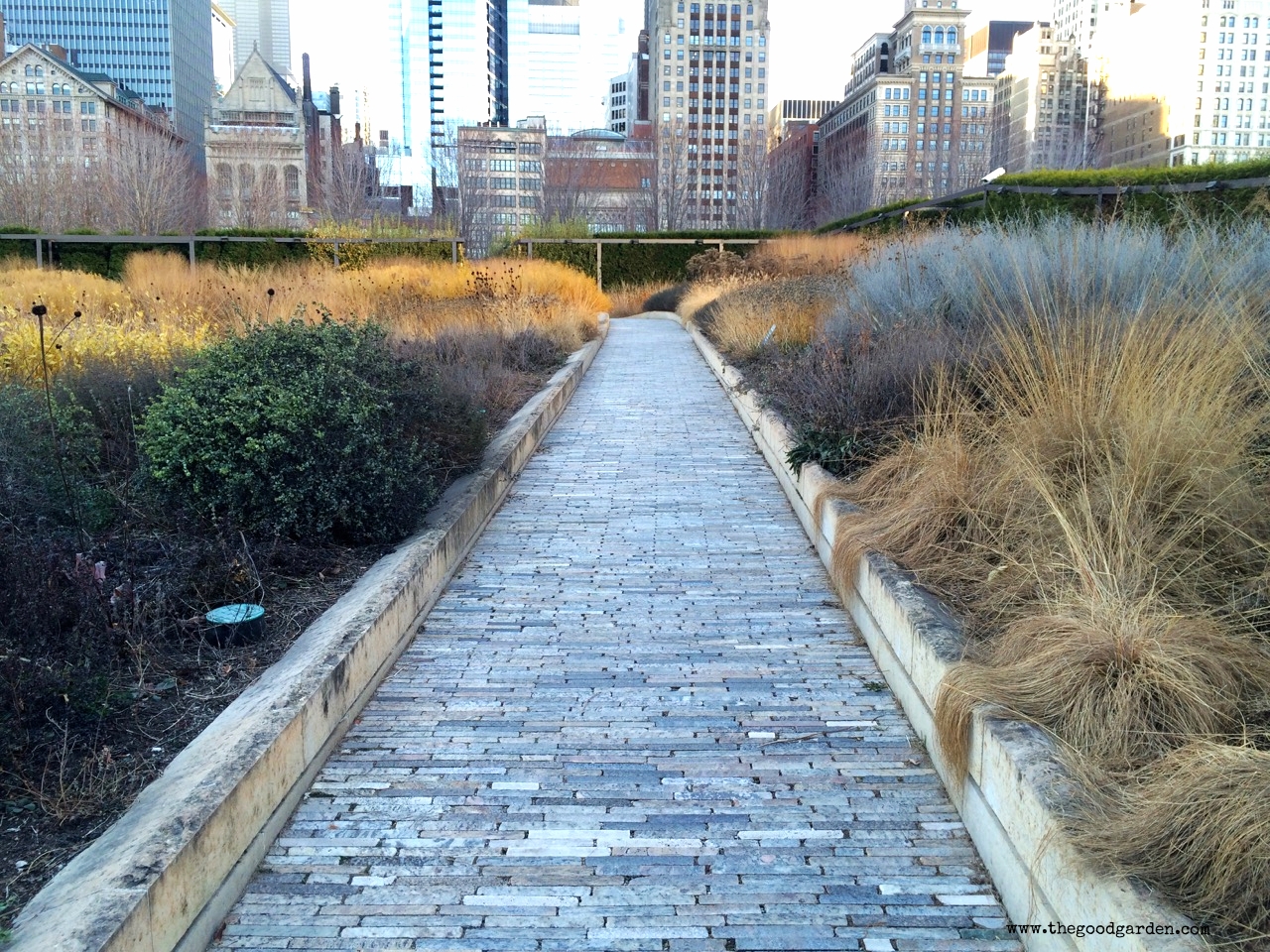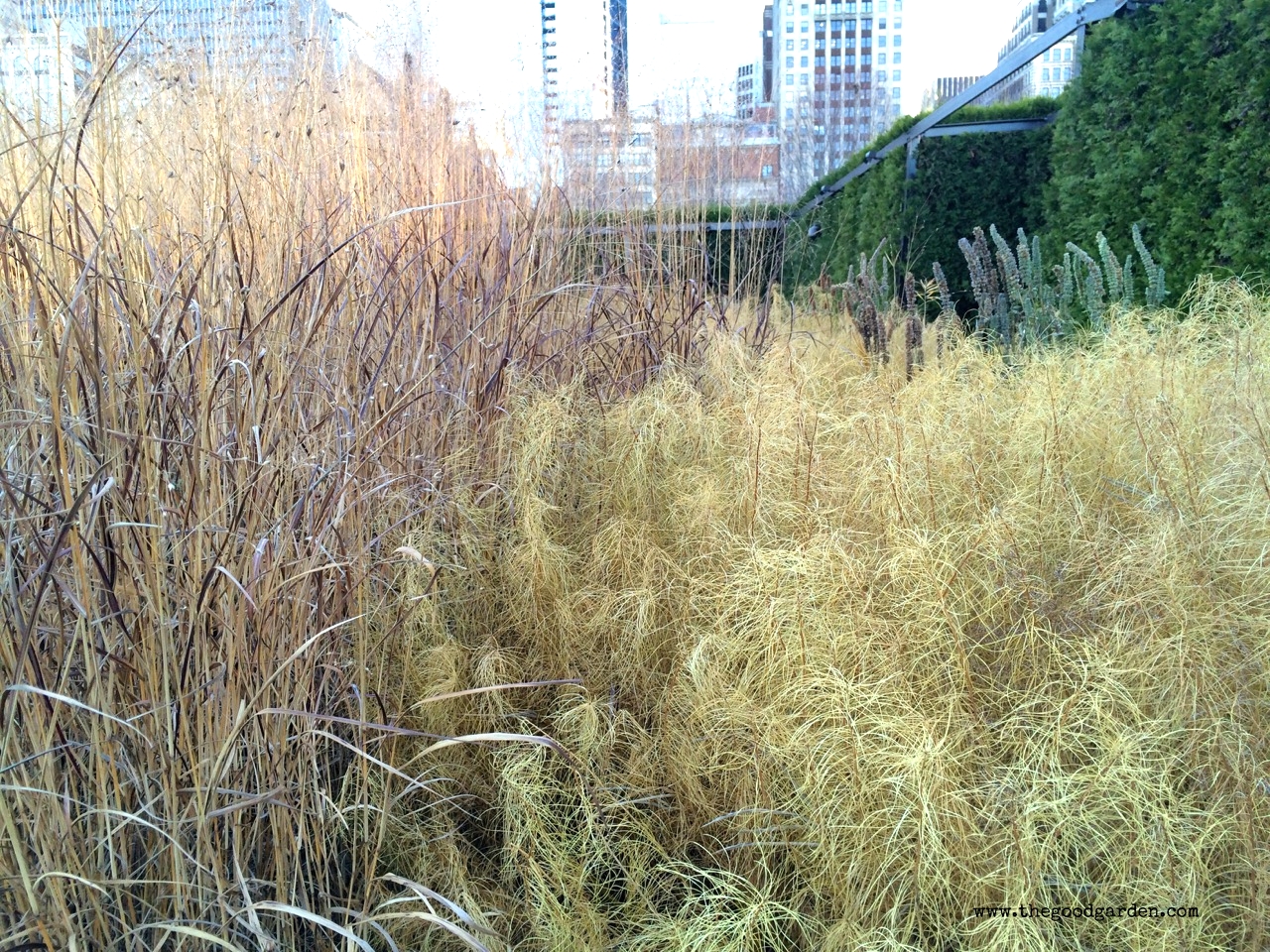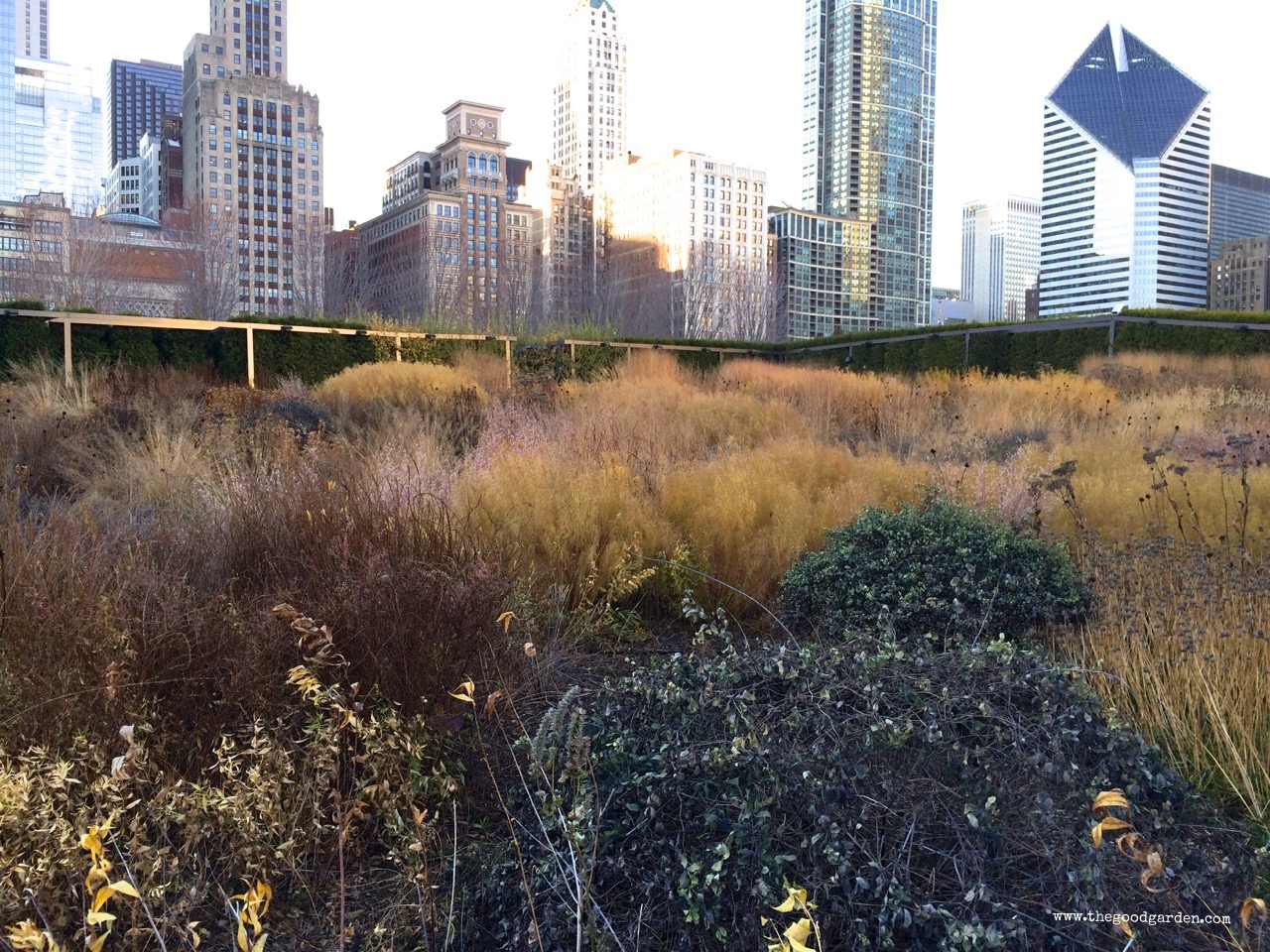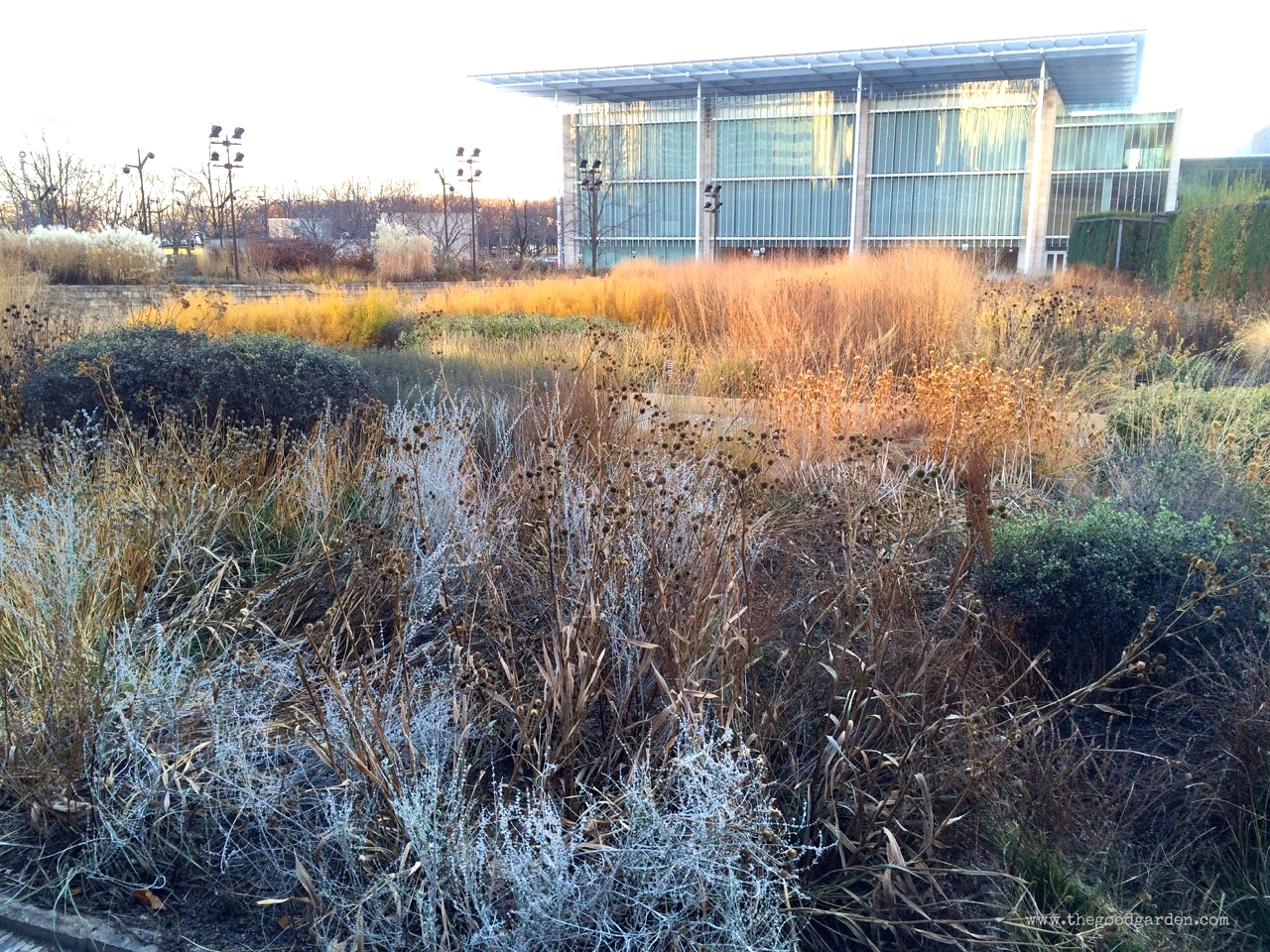My visit last week to Chicago’s Lurie Garden reminded me that winter gardens don’t have to be boring. I expected a dreary brown and beige garden full of bare spots. This part of the world has already had weeks of winter weather - thanks to the return of the polar vortex.
Instead of dreary, I was dazzled by native plants that continue to deliver complex and refreshing interest after their peak blooming season.
Tucked inside Millennium Park, a few openings in a 15-foot tall hedge invite one into the Lurie Garden. Garden designers Gustafson Guthrie Nichol, Piet Oudolf and Robert Israel created a garden full of native plants laid out as they might be seen in the wild. The garden consists of four key elements: the Shoulder Hedge – a frame for the garden; the Light Plate - an open meadow full of native grasses and perennials; the Dark Plate - a more intimate space with trees and taller grasses; and the Seam - a stream that divides the two Plates.
Of course this garden looks wonderful when everything is in bloom. But on my recent visit, I was inspired by how the plants add a new dimension in winter. After a minute in the garden, I began to see more and more colors: gold, burgundy, silver, green, rust. Narrow paths encourage one to appreciate the architectural stalks and seed-heads up-close; when viewed from the side, these paths disappear so that the garden becomes a large meadow and woodland. Shapes and colors are intensified by back-lighting and shadows cast by the low winter-sun. Wind produces a wonderful rustling sound, and finches dart in and out of the garden to stock up on nutritious seeds.
This garden is just 10 years old. As a garden history buff, I suspect that the designers, in their embrace of native plants, were channeling the work of Bernard McMahon who wrote the iconic American Gardener's Calendar in 1806. McMahon was one of the first to appreciate and encourage the use of native plants in American gardens. In one passage he asks: "Is it because [native plants] are indigenous that we should reject them? What can be more beautiful than our Lobelias, Asclepias, Orchis, and Asters? In Europe plants are not rejected because they are indigenous; and yet here [in America], we cultivate many foreign trifles, and neglect the profusion of beauties so bountifully bestowed upon us by the hand of nature."
I left this garden thinking of my own perennial beds and I made a few ‘notes to self’: choose more perennials for their winter structure, resist the temptation to cut things down too soon, plant in drifts to create impact--then sit back and enjoy.
I encourage everyone to add this 5-acre garden to their list of things to do when they are next in Chicago. In the meantime, this garden is backed by one of the best websites I have seen, including a wonderful Design Narrative.







